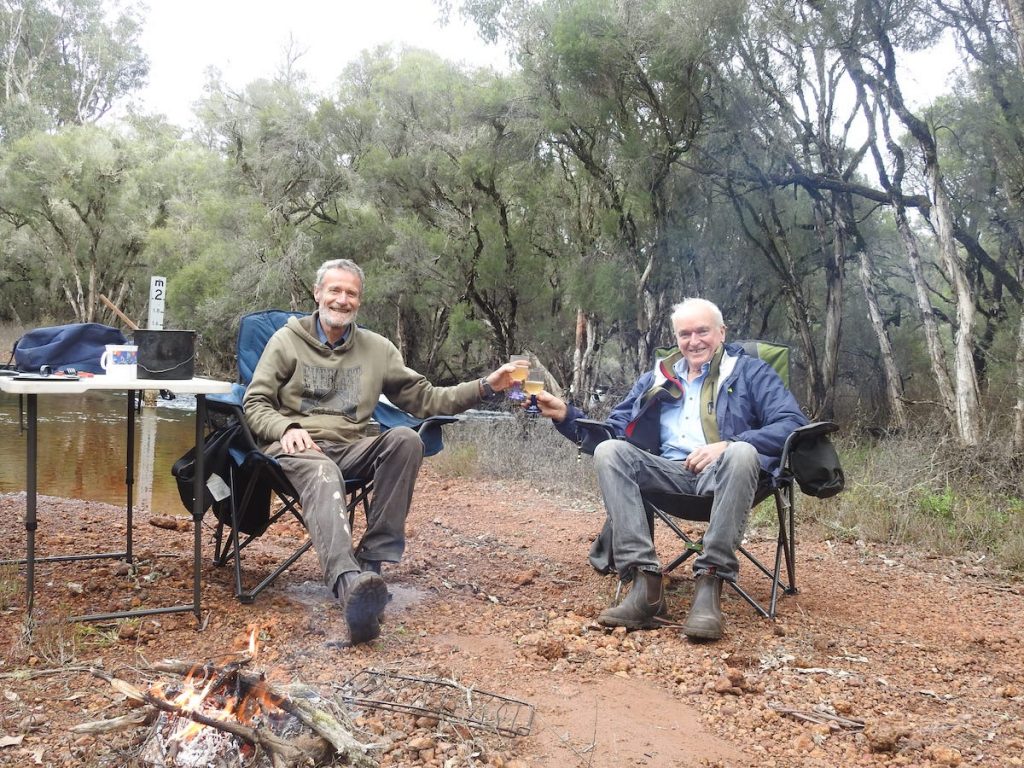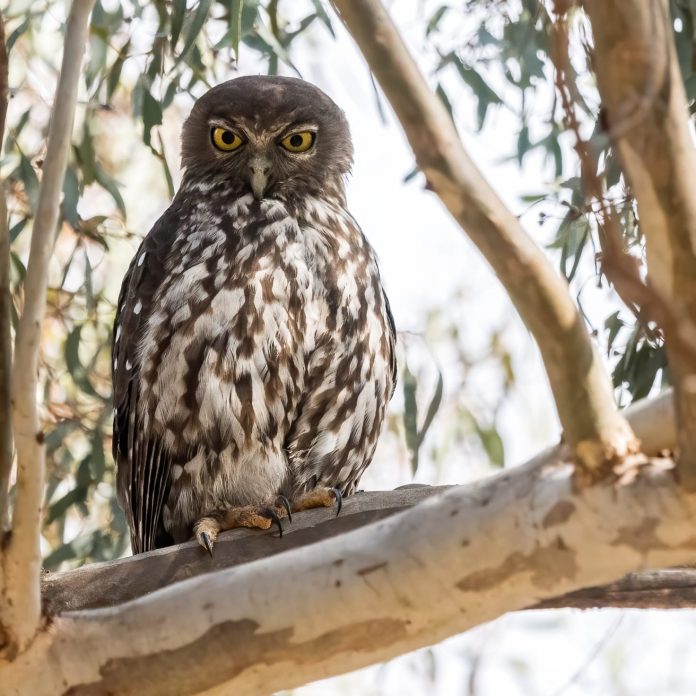Australia holds a tragic record – the 2022 State of the Environment report found Australia has lost more species to extinction than any other continent. That’s 54 species of mammals, birds, frogs and other fauna.
Australia is also in the top 10 for endangered and threatened species with 909 species categorised as critically endangered, endangered or vulnerable. The list includes the beloved koala, with populations in Queensland, New South Wales and the ACT classified as endangered.
Conservation efforts are underway to save several well-known species in WA, including the western swamp tortoise, white-bellied frog, numbat, western ringtail possum and black cockatoos. However some species may be slipping away almost unnoticed. One of these is the southern barking owl.
The barking owl is a larger relative of the boobook. WA has a south-west corner population of a southern Australian race as well as Pilbara and Kimberley populations of a northern race. Our south west barking owls were once found from near Perth in the north, east to Northam and south-east to Katanning and Bremer Bay but a newly-published review by ECU’s Dr Rob Davis and colleagues has found only 10 confirmed records in the past 10 years, with no definite recent records.
This winter my husband, ornithologist Dr Boyd Wykes, has spent many cold nights surveying, using play-back of their calls to attract any barking owls surviving in their last known locations.
“Our focus has been on woodland on the eastern flanks of the denser forested Darling Scarp, south from Collie to Manjimup,” he said. “Unfortunately, we have had no success.”

The current conservation listing of the Barking Owl in south-west WA is Priority 3: known from several locations; does not appear to be under imminent threat, or from few but widespread locations with either large population size or significant remaining areas of apparently suitable habitat, much of it not under imminent threat.
Tragically, it looks as though our barking owl will jump from here to being listed as extinct without any conservation attention. Possible factors leading to extinction include clearing and degradation of woodland, wetlands and waterways in the wheatbelt and loss of open, old growth forest by logging and altered fire regimes.
However there is still a chance that barking owls are out there somewhere, perhaps on private land, and Dr Davis is planning a publicity campaign to enlist community support to find them. Boyd says that this is a bird that is readily identified.
“Many people who have camped along watercourses in the north of our state will have heard the distinctive woof-woof call, which can really only be confused with the yapping of a dog. The barking owl is also famous for its occasional, mating season ‘shrieking woman’ screech, but shrieking without any barking calls is likely something else such as a fox,” he said.
The demise of our south-west barking owls is a reminder that while we focus on trying to save particular species, protecting whole ecosystems and the interconnections between them are the key to maintaining our unique biodiversity. This is especially so as the increasingly-evident impacts of climate change, including more frequent bushfires and severe weather events, add to clearing, predation by feral animals, inappropriate burning regimes and other pressures of our expanding population.
Destruction of threatened species habitat continues at an alarming rate due, many believe, to failures of Australia’s environmental protection laws. In good news, the recent announcement by Environment Minister Tanya Plibersek of a 10-year strategy to halt the loss of any more species means that more than 100 threatened animals and plants – including iconic species like the koala – will be prioritised under new conservation strategies. The plan includes a promise to protect a third of the continent’s land mass under national environment laws to help vulnerable species and habitats. Meanwhile, the Albanese government will be introducing new environment laws next year – we watch in hope of stronger legislation with teeth.
Ms Plibersek’s announcement of a goal of no more extinctions, with new support mechanisms for any species that ends up on an extinction list, is a reminder of how important it is to understand what is happening in our local environment. Anyone who may have a lead on barking owls can contact Boyd via the Owl Friendly Facebook www.facebook.com/owlfriendlymargaretriver.



































